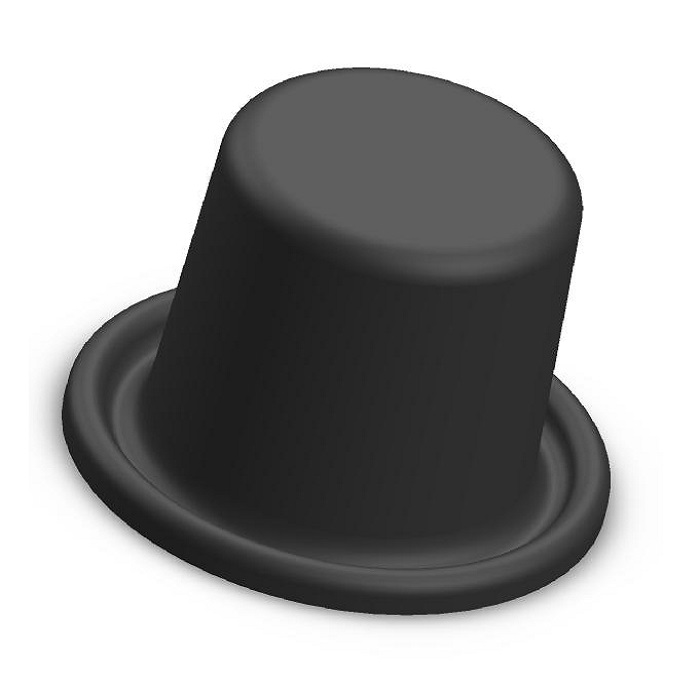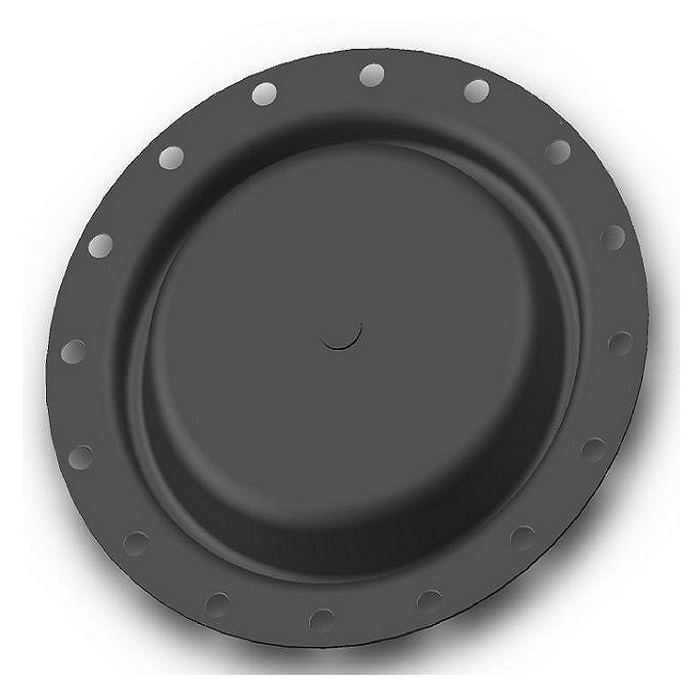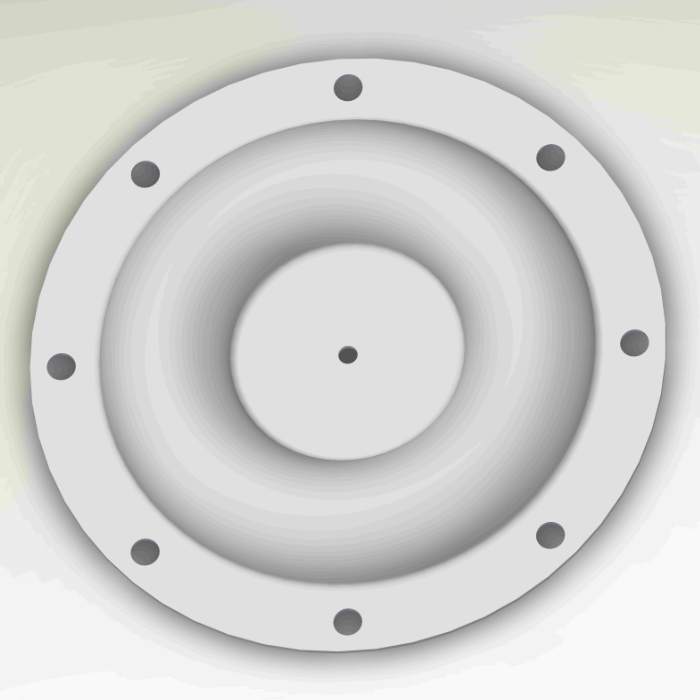GENERAL SEALTECH is engaged in the research, development, production, process, marketing and trade of diaphragms. We have experienced and professional staff members. We have strong mold development capabilities and high precision instruments and equipment.
We specialize in the production of Solenoid Pulse Valve Diaphragms,LPG CNG Diaphragm,Gas meter diaphragms,Teflon / PTFE Diaphragm,Diaphragm Valve pump Diaphragms,Turbo Actuator Waste-gate Diaphragms,etc.After more than 15 years of pioneering venture, we have already become a professional company in the field. We follow the “leading technology, improving quality” principle. Our products are exported to Asia,Africa,America.
| Product name | diaphragm spray gun regulator |
| Place of Origin | Hangzhou,Zhejiang,China |
| Brand Name | GENERAL SEALTECH |
| Colors | green,Recommended black |
| Type | Diaphragm |
| Advantage | high strength |
| Certification | National Sanitary Certificate,NSF,PAHS,EN681-1,REACH,etc |
| Export region | Asia,Europe,Oceania… |
| Export country | USA,Japan,Italy,Australia,Iraq,Monaco,Guadeloupe…etc |
| Payment Term | T/T |
| Size | Customizable size |
| Product Material | AEM,NBR,EPDM,HNBR,FVMQ,etc |
| Surface | Smooth, glossy, textured, matte |
| Packaging Details | carton or according to requirements of the customers |
| After-sales Service | Online technical support |
| MOQ | 100 Pieces(negotiable) |
| Port | Shanghai |
| Application | Seal for Valve,Electrical Appliances…etc |
| Service | OEM/ODM/Private |
| Properties | Fire Resistance,Environment Protective,Oil Resistance…etc |
| Supply Ability | 50000-200000 Piece/Pieces per Month |
| Lead time (days) | 7-15 (To be negotiated) |
Please note: This table is for reference only, please consult us for specific information.
Another advantage of diaphragm spray gun regulator is that they can provide a certain degree of protection to prevent cross contamination of substances, which is particularly important for fields such as environment,healthcare,food.
If the medium used is corrosive, corrosion-resistant diaphragm materials should be selected;
Necessary protective measures should be taken to minimize damage to objects that come into contact with the already installed diaphragm.
Provide customized services exclusive to customers, and customize various diaphragm products according to their needs to meet the needs of different industries.
diaphragm spray gun regulator—FAQs Guide
2.What is the role of diaphragm spray gun regulator in controlling the flow of aggressive or corrosive chemicals in chemical processing applications?
3.Are there diaphragm spray gun regulator equipped with built-in sensors for real-time monitoring and feedback in automated systems?
4.Can diaphragm spray gun regulator be used in air-operated or pneumatic systems, and how do they contribute to system functionality?
5.About diaphragm spray gun regulator,How can I get the best price and quality?
6.How do diaphragm spray gun regulator perform in applications where flexibility and rapid response to pressure changes are crucial?
7.Are there specialized diaphragm spray gun regulator for high-pressure applications, and what features make them suitable for these conditions?
8.Do diaphragm spray gun regulator have temperature limitations, and how do they perform in extreme temperature conditions?
9.Can diaphragm spray gun regulator be used in applications requiring compliance with industry standards, such as FDA, ASME, or ISO?
10.How are diaphragm spray gun regulator designed to resist chemical corrosion and degradation in aggressive environments?
11.How are diaphragm spray gun regulator designed to resist abrasion and wear in applications with abrasive media?
12.How do diaphragm spray gun regulator maintain their flexibility and resilience over time, and what factors can lead to wear or degradation?
13.What is a diaphragm?
14.What are the considerations for choosing between elastomeric diaphragm spray gun regulator and non-elastomeric diaphragm spray gun regulator for specific applications?
1.Can diaphragm spray gun regulator be customized for specific applications?
Yes, diaphragms can be customized for specific applications. Depending on the application, the diaphragm can be made from different materials, such as rubber, plastic, or metal, and can be designed to meet specific requirements.
2.What is the role of diaphragm spray gun regulator in controlling the flow of aggressive or corrosive chemicals in chemical processing applications?
Diaphragms are used to control the flow of aggressive or corrosive chemicals in chemical processing applications. They act as a barrier between the chemical and the process equipment, preventing the chemical from coming into contact with the equipment and causing corrosion or other damage. Diaphragms are also used to regulate the flow of the chemical, allowing for precise control of the process.
3.Are there diaphragm spray gun regulator equipped with built-in sensors for real-time monitoring and feedback in automated systems?
Yes, there are diaphragms equipped with built-in sensors for real-time monitoring and feedback in automated systems. These diaphragms are typically used in industrial applications such as pumps, valves, and compressors. The sensors measure the pressure and flow of the system and provide feedback to the control system to ensure the system is operating correctly.
4.Can diaphragm spray gun regulator be used in air-operated or pneumatic systems, and how do they contribute to system functionality?
Yes, diaphragms can be used in air-operated or pneumatic systems. Diaphragms are flexible membranes that are used to separate two different areas of a system. They are used to control the flow of air or other gases in a system. They can be used to regulate the pressure of the system, to control the flow of air, and to act as a check valve. Diaphragms can also be used to dampen vibrations and reduce noise.

5.About diaphragm spray gun regulator,How can I get the best price and quality?
The price depends on the quantity, design and size. If you order more, the price and shipping will be cheaper.
6.How do diaphragm spray gun regulator perform in applications where flexibility and rapid response to pressure changes are crucial?
Diaphragms are ideal for applications where flexibility and rapid response to pressure changes are crucial. They are designed to flex and move in response to pressure changes, allowing them to quickly adjust to changing conditions. This makes them ideal for use in applications such as pumps, valves, and other pressure-sensitive systems. Additionally, diaphragms are often used in applications where a tight seal is required, such as in fuel tanks and hydraulic systems.
7.Are there specialized diaphragm spray gun regulator for high-pressure applications, and what features make them suitable for these conditions?
Yes, there are specialized diaphragms for high-pressure applications. These diaphragms are designed to withstand higher pressures and temperatures than standard diaphragms. They are typically made from reinforced elastomers or metal materials such as stainless steel or Hastelloy. These materials are chosen for their strength and durability, as well as their ability to resist corrosion and wear. Additionally, these diaphragms are designed with thicker walls and reinforced edges to provide additional strength and stability.
8.Do diaphragm spray gun regulator have temperature limitations, and how do they perform in extreme temperature conditions?
Diaphragms do have temperature limitations, and their performance in extreme temperature conditions can vary depending on the material used. Generally, diaphragms are designed to operate within a temperature range of -40°F to +250°F (-40°C to +121°C). In extreme temperature conditions, the diaphragm may become brittle and crack, or the material may become too soft and lose its shape. Additionally, the diaphragm may become distorted due to thermal expansion and contraction.

9.Can diaphragm spray gun regulator be used in applications requiring compliance with industry standards, such as FDA, ASME, or ISO?
Yes, diaphragms can be used in applications requiring compliance with industry standards, such as FDA, ASME, or ISO. However, the specific requirements of the application must be taken into consideration when selecting the appropriate diaphragm material and design.
10.How are diaphragm spray gun regulator designed to resist chemical corrosion and degradation in aggressive environments?
Diaphragms are designed to resist chemical corrosion and degradation in aggressive environments by using materials that are resistant to the specific chemicals present. Common materials used for diaphragms include fluoropolymers, such as PTFE, FEP, and PFA, as well as elastomers, such as EPDM, Viton, and Neoprene. These materials are chosen for their chemical resistance, as well as their ability to withstand extreme temperatures and pressures. Additionally, diaphragms may be coated with a protective layer of a corrosion-resistant material, such as a fluoropolymer or a metal, to further protect them from chemical attack.
11.How are diaphragm spray gun regulator designed to resist abrasion and wear in applications with abrasive media?
Diaphragms are designed to resist abrasion and wear in applications with abrasive media by using materials that are highly resistant to abrasion and wear. These materials include polyurethane, rubber, and other elastomers. The diaphragm is also designed with a thicker wall and reinforced edges to provide additional protection against abrasion and wear. Additionally, the diaphragm may be coated with a protective material such as a fluoropolymer to further reduce wear and tear.
12.How do diaphragm spray gun regulator maintain their flexibility and resilience over time, and what factors can lead to wear or degradation?
Diaphragms maintain their flexibility and resilience over time by being made of materials that are resistant to wear and tear. Common materials used for diaphragms include rubber, silicone, and polyurethane. These materials are designed to be durable and flexible, and can withstand a wide range of temperatures and pressures.
Factors that can lead to wear or degradation of diaphragms include exposure to extreme temperatures, exposure to chemicals, and physical damage. Additionally, diaphragms can become brittle over time due to age and exposure to the elements. To prevent wear or degradation, it is important to inspect diaphragms regularly and replace them when necessary.

13.What is a diaphragm?
A diaphragm is a thin, dome-shaped muscle located between the thoracic and abdominal cavities. It is the primary muscle of respiration and helps to regulate the flow of air into and out of the lungs. The diaphragm also plays an important role in aiding digestion by helping to move food through the digestive tract.
14.What are the considerations for choosing between elastomeric diaphragm spray gun regulator and non-elastomeric diaphragm spray gun regulator for specific applications?
We are a professional diaphragm spray gun regulator manufacturer, and the factors we consider include:
1. Cost: Elastomeric diaphragms are typically more expensive than non-elastomeric diaphragms.
2. Durability: Elastomeric diaphragms are more durable and can withstand higher pressures and temperatures than non-elastomeric diaphragms.
3. Chemical Compatibility: Elastomeric diaphragms are more resistant to chemical attack than non-elastomeric diaphragms.
4. Flexibility: Elastomeric diaphragms are more flexible than non-elastomeric diaphragms, allowing them to be used in applications where a tight seal is required.
5. Performance: Elastomeric diaphragms are better at maintaining a seal over time than non-elastomeric diaphragms.
Tags: thomas pump diaphragm,aem fuel pressure regulator diaphragm,buchi pump diaphragm 700,ptfe sandwich diaphragm,kohler k321 fuel pump diaphragm,outboard fuel pump diaphragm

